Axial alignments of 20 surveyed Megalithic Tombs.
Sorted by: Location Name | Alignment Class
This is a mix of tomb types and the majority of these surveyed sites are Irish. Wedge tombs are chalcolithic / early bronze age and only found in Ireland.
The rest are all neolithic. Passage tombs and portal tombs are quite widespread. Court tombs are only found in Ireland, long barrows are British.
- For classification purposes these surveyed horizons have been divided into a small number of zones.
This classification is an overall one that considers all axes to be potentially bi-directional.
- Extreme is where sun and moon never rise or set but excludes the north-south axis of celestial rotation.
- Lunar is where lunistices
Lunistices are the most northerly and southerly moons of the month. The lunar equivalent of solstices. More.
occur but sun rises or sets do not.
- Solar is where sun rises or sets occur but lunistices do not.
- Solar / Lunar is where a lunistice zone overlaps with the outer regions of the sun's annual travels.
Alternatively one direction may be purely solar while the other is somewhere within a lunistice range.
- Note that these terms may well have other uses elsewhere.
Axial Alignment Classes of surveyed megalithic tombs
| Type | Number | %
|
|---|
| Solar | 9 | 45
|
| Solar / Lunar | 5 | 25
|
| Lunar | 6 | 30
|
| Extreme | - | -
|
| North-South | - | -
|
| All | 20 | 100
|
- No extreme axes here, not quite anyway.
- All pointing towards sun or moon, one way or the other.
- This tiny sample is not at all representative, just a quick comparison with the late bronze age sites that were the main focus of the study.
No essential differences to be seen except those due to coping with terrain / vegetation.
Of this sample, eleven are bi-directional and nine are uni-directional.
Note that in the case of uni-directional axes the significant direction may be the apparent reverse.
See for yourself:
- Orange Solar trajectories split the tropical year into 48 "Tweeks" (7.6 day mean) that are better regarded as quarter-months.
- Solid Blue Lunar lines split cyclical lunistice position variation into 16 periods of about 14 months each.
- Lunistices are the most northerly and southerly moons of the month [More].
- Also see Technical Notes on the Pictures

 Ahaglaslin Portal Tomb
Ahaglaslin Portal Tomb:
The portals have tilted and the capstone has swung to the north-east. The backstone and portico stones have not moved and these were used to determine that the axis
was centred at c.71° / 251°. About winter cross-quarter / equinox midpoint to the south-west and summer cross-quarter to the north-east.

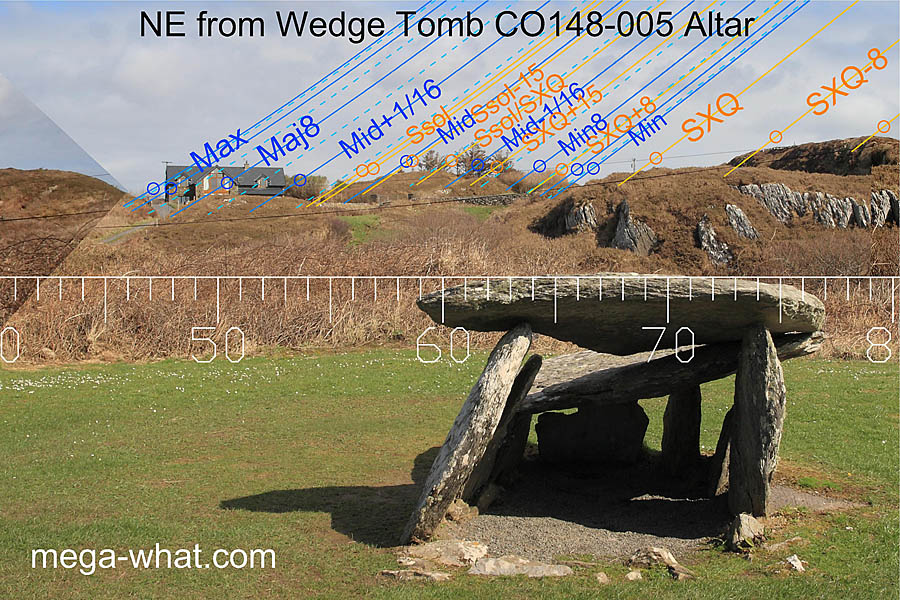 Altar Wedge Tomb
Altar Wedge Tomb:
The south-western axis covers a period of about three weeks and includes the winter cross-quarters but seemingly not any lunistices.
Axial reverse includes both minor standstill and the cross-quarters but the centre is outside the lunistice range.

 Arderrawinny Portal Tomb
Arderrawinny Portal Tomb:
Facing a cliff, the tomb axis is beyond major standstill to the north-west but the reverse seems to be towards the winter cross-quarters.
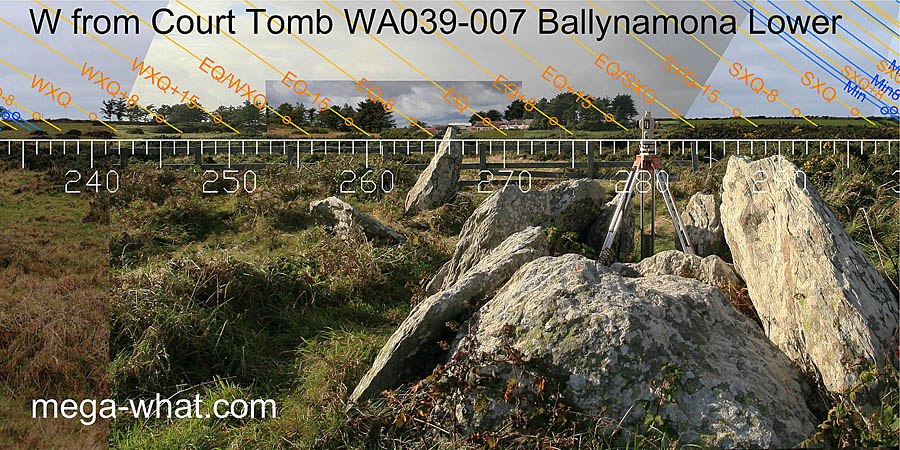
 Ballynamona Court Tomb
Ballynamona Court Tomb:
This axis seems intended to indicate equinox / cross-quarter midpoints in both directions.
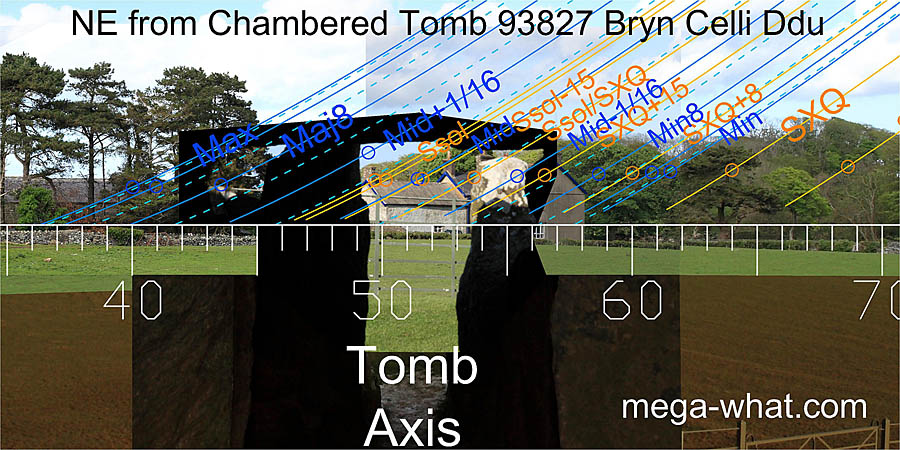
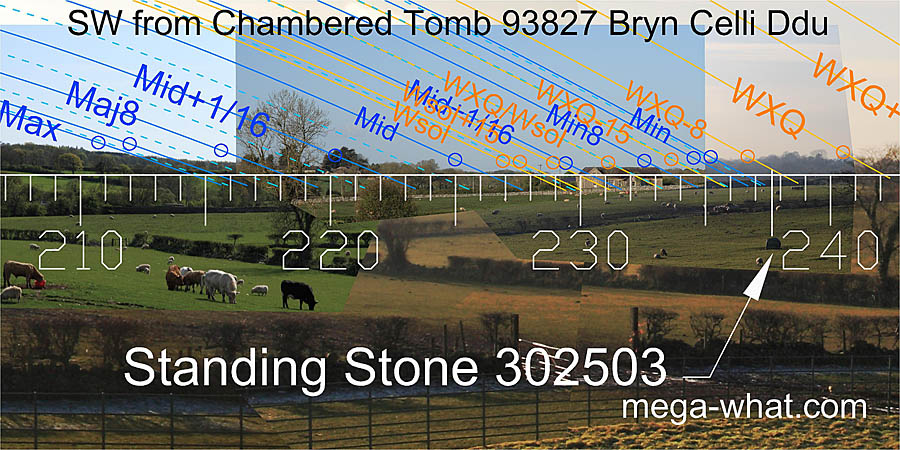 Bryn Celli Ddu Chambered Tomb
Bryn Celli Ddu Chambered Tomb:
The passage axis is towards summer solstice sunrise. The axial reverse of c.230-235° is about half-way between winter solstice and the winter cross-quarters.

 Carrowmore Passage Tomb 3
Carrowmore Passage Tomb 3:
The axis is beyond major standstill to the north-west but to the south-east it would cover the major end of the lunistice cycle.
Judging from the slope and not having seen the excavation report, it seems probable that the entrance was to the south-east.
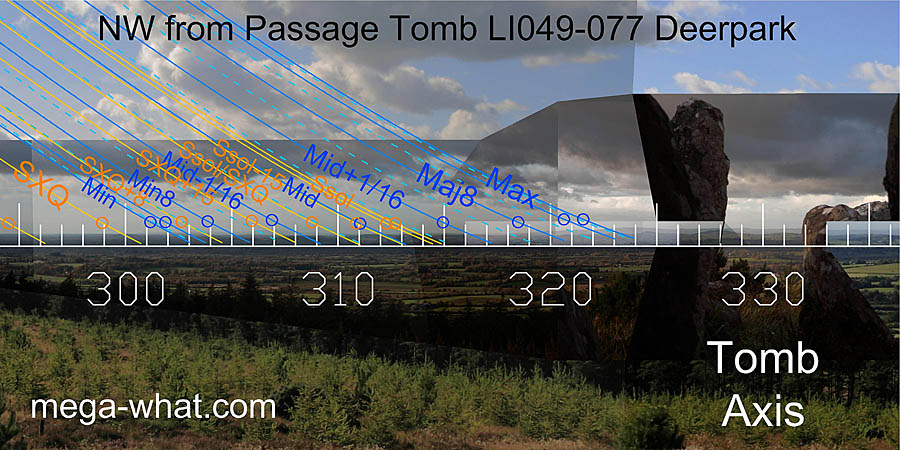
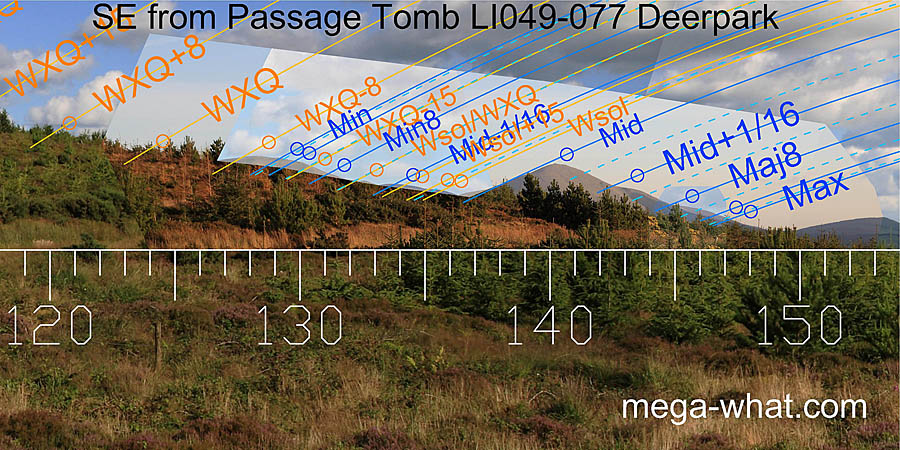 Deerpark Passage Tomb
Deerpark Passage Tomb:
The passage axis is about six degrees beyond north-western major standstill moonsets.
The reverse is into the hillside but, from the roof slabs, the line indicates major standstill moonrises in the south-east.
Perhaps just beyond but only just. An expression of striving to get there which is actually quite common...
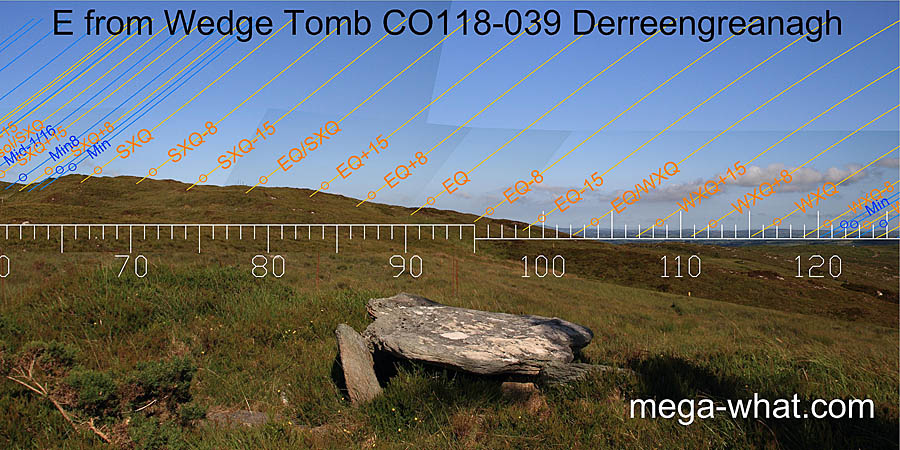
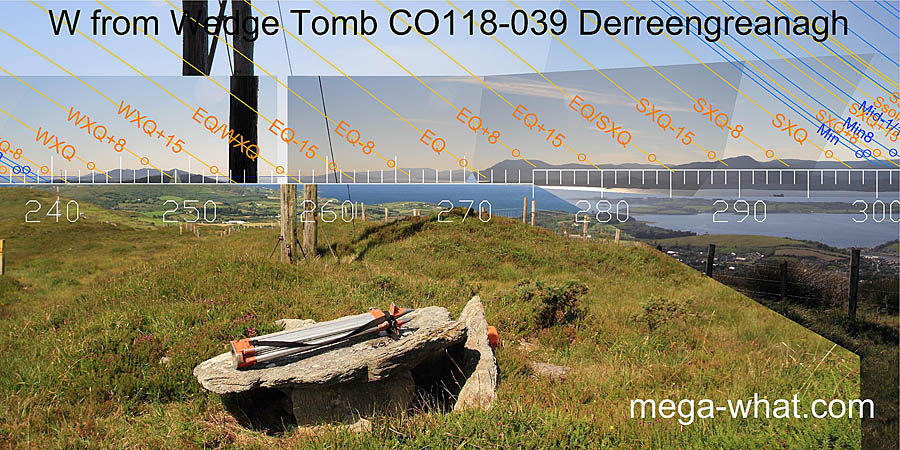 Derreengreanagh Wedge Tomb
Derreengreanagh Wedge Tomb:
The ruinous state precludes an accurate assessment but reverse axis to the east is perhaps vaguely equinoctial.
To the west, a seemingly secure backstone suggests an axis more towards the equinox / winter cross-quarter midpoint.
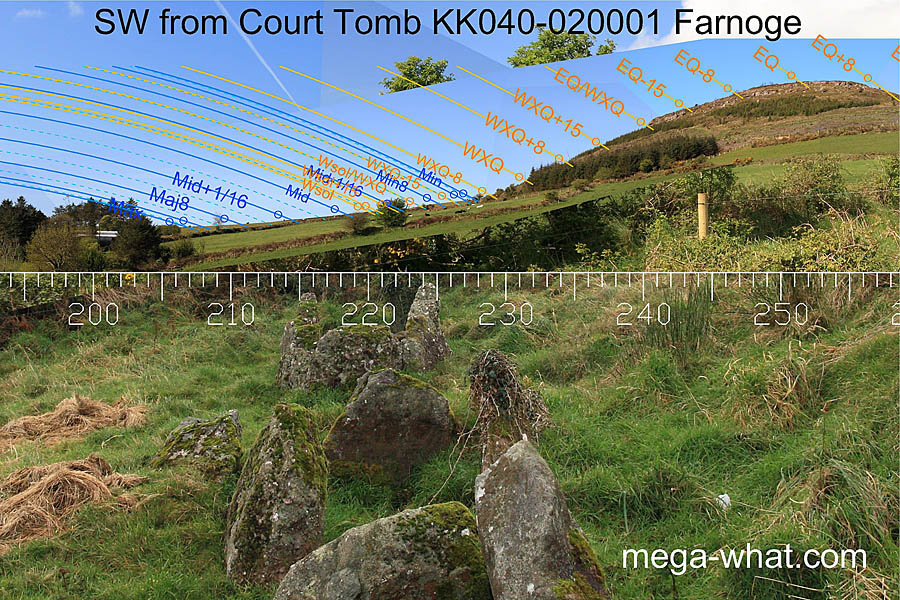
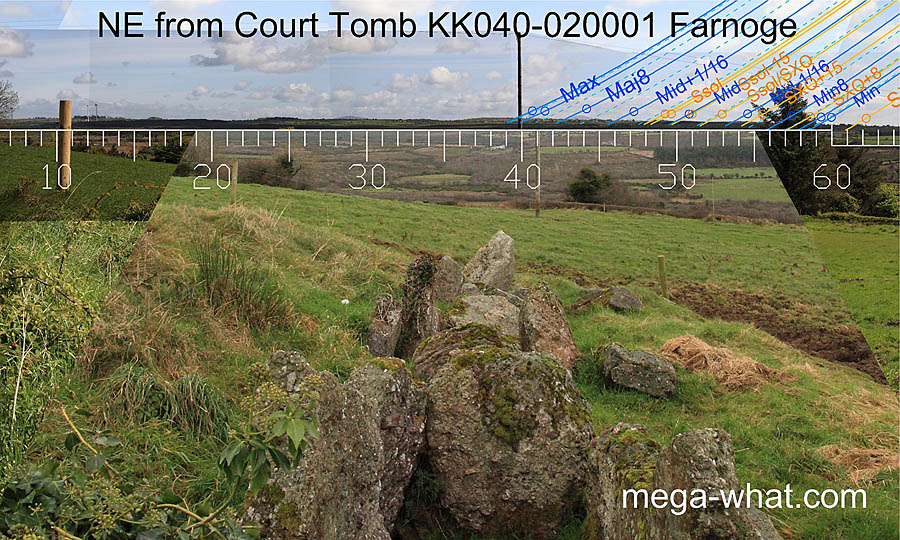 Farnoge Court Tomb
Farnoge Court Tomb:
The axis of this long, narrow tomb indicates summer solstice to the south-west and major standstill (perhaps just beyond it) to the north-east.

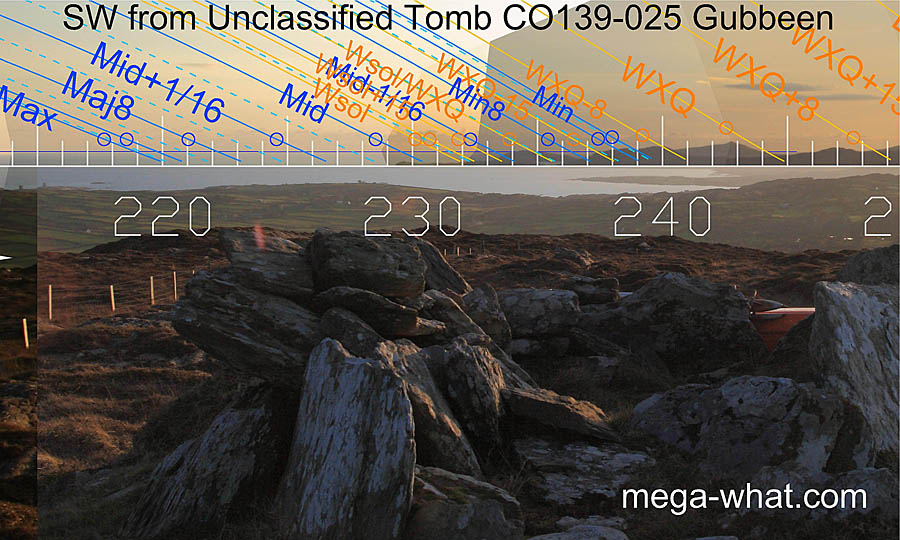 Gubbeen Unclassified Tomb
Gubbeen Unclassified Tomb:
The chamber seems to be open at the north-east end, pointing towards the minor end of the lunistice range.
The reverse axis is similar.

 Island Wedge Tomb
Island Wedge Tomb:
The tomb faces the middle of the major half of the south-western lunistice range. The north-eastern axis is beyond major standstill.

 Knockroe Passage Tomb
Knockroe Passage Tomb:
There are two passages. One faces south-east and a larger, decorated one faces the south-west.
Both are said to be solstitial but clearly the eastern one is not and is in fact more likely to indicate minor standstill of the moon.
The western one is constructed such that it also seems to be centred on minor standstill but
also would allow light from the sun in right up to the winter solstice and from the moon right up to the mid-point.
[More explicit axial pics].

 Labbacallee Wedge Tomb
Labbacallee Wedge Tomb:
This is a wide bodied tomb so the axial spread is quite large but the axis seems to be centred some 10° or so clockwise of the equinox.
That's about a half-month before spring equinox to the east and a half-month before autumn equinox to the west.
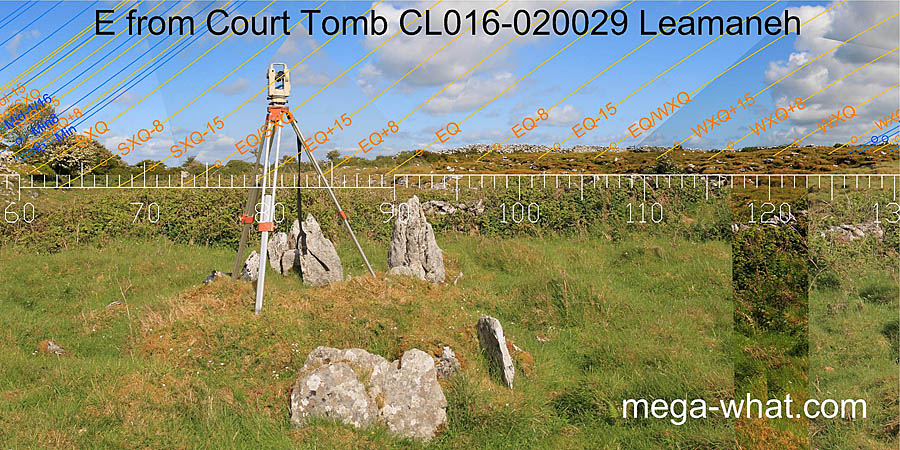
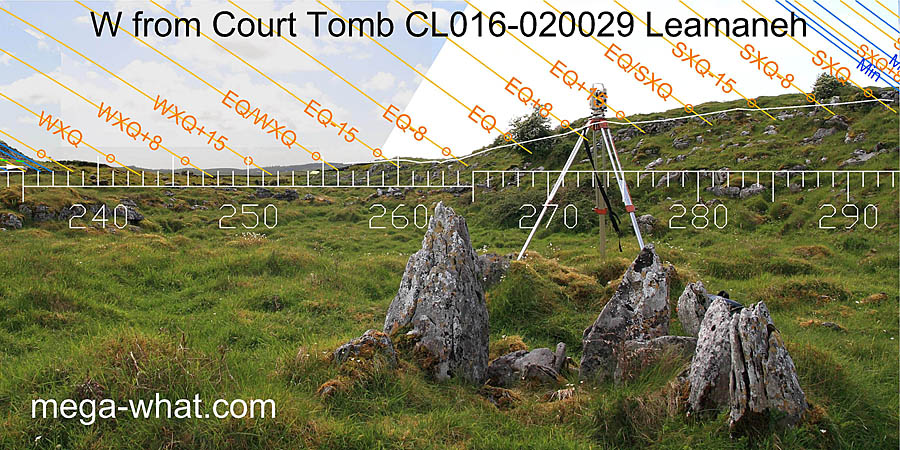 Leamaneh Court Tomb
Leamaneh Court Tomb:
Approximately equinoctial but the survey was not thorough enough for axial certainty.
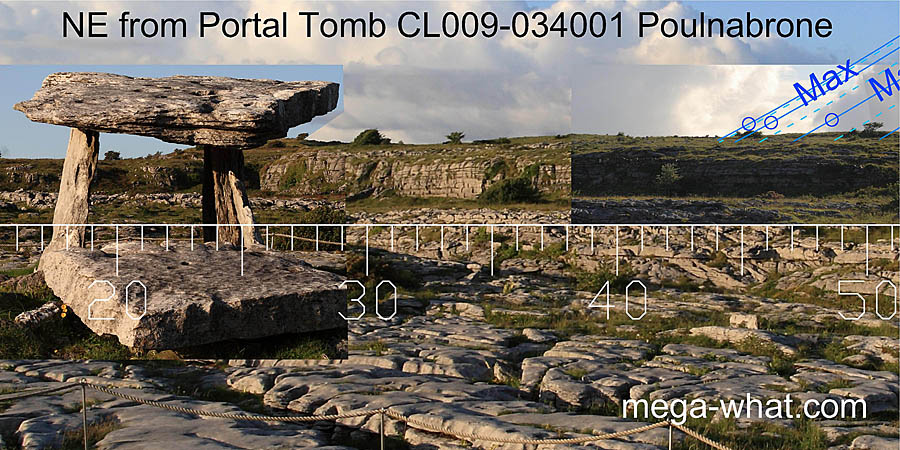
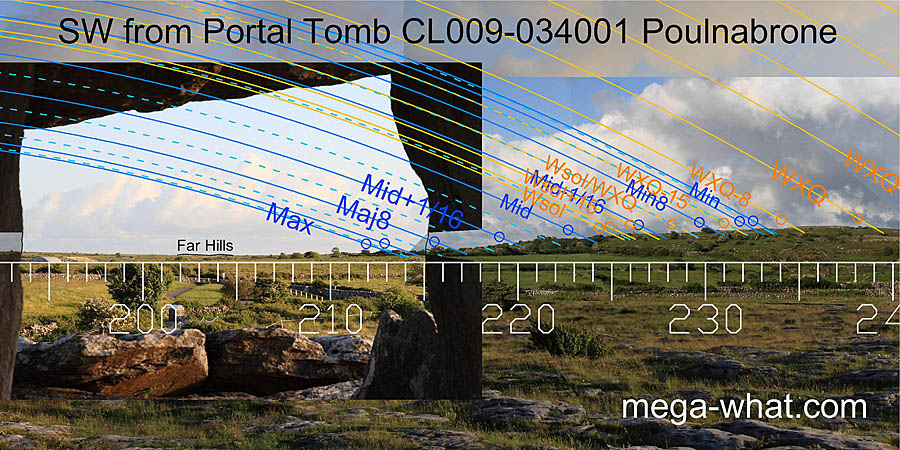 Poulnabrone Portal Tomb
Poulnabrone Portal Tomb:
The north-eastern axis is well beyond major standstill.
The (presumed) axial reverse to the south-west just includes it but might just exclude it if all the stones were in situ.

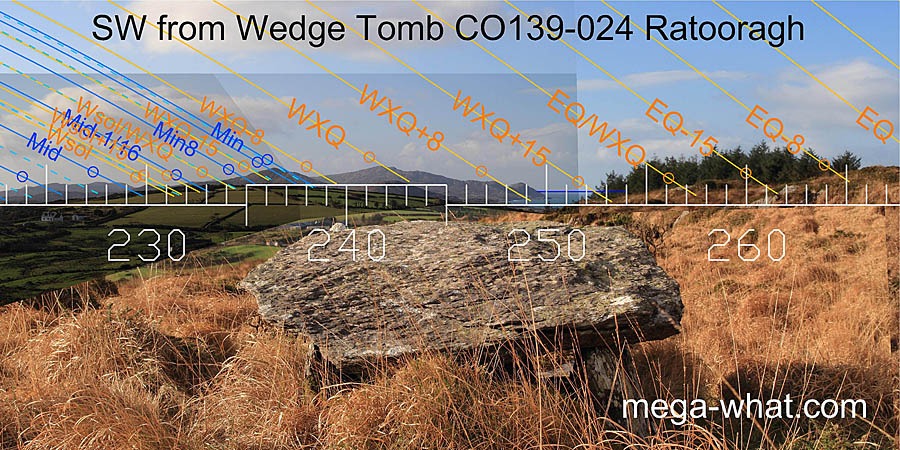 Ratooragh Wedge Tomb
Ratooragh Wedge Tomb:
The north-eastern reverse axis is clearly towards summer cross-quarters.
The south-west axis is harder to ascertain due to the shape of the capstone but is in the general direction of winter cross-quarters.

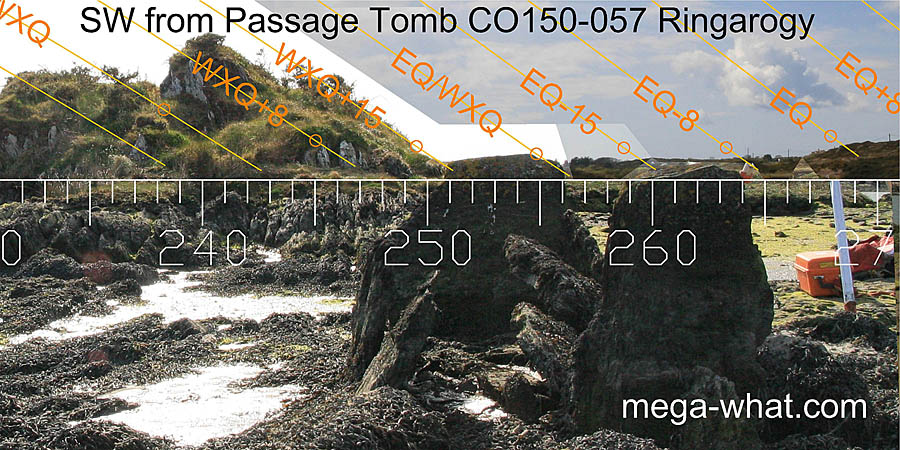 Ringarogy Passage Tomb
Ringarogy Passage Tomb:
The passage axial alignment is a half-month south of the summer cross-quarters, that's before Lughnasadh.
Axial reverse to the south-west is two to three weeks north of the winter cross-quarters, that's before Samhain.
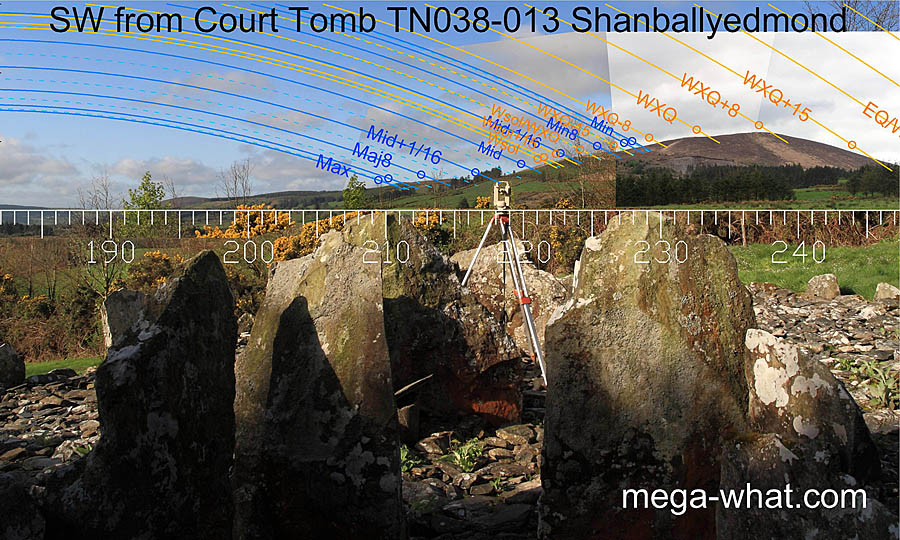
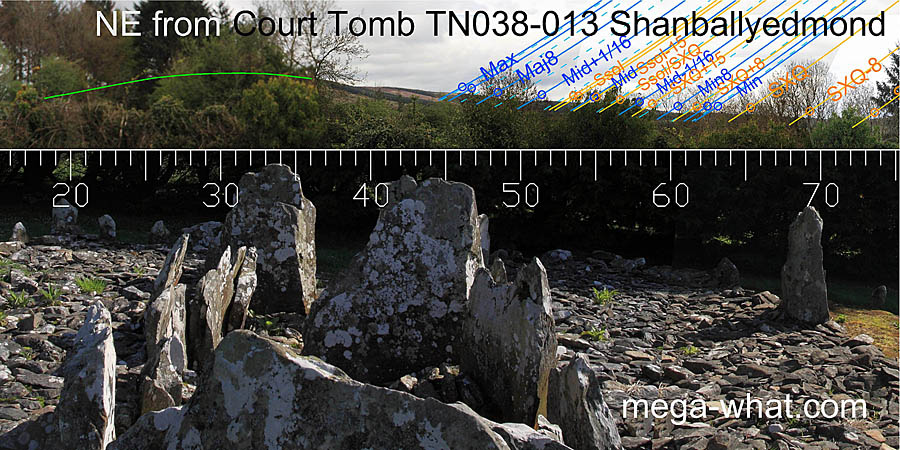 Shanballyedmond Court Tomb
Shanballyedmond Court Tomb:
The south-western reverse axis points at the middle of the major half of the lunistice range but the north-eastern axis is well beyond major standstill.

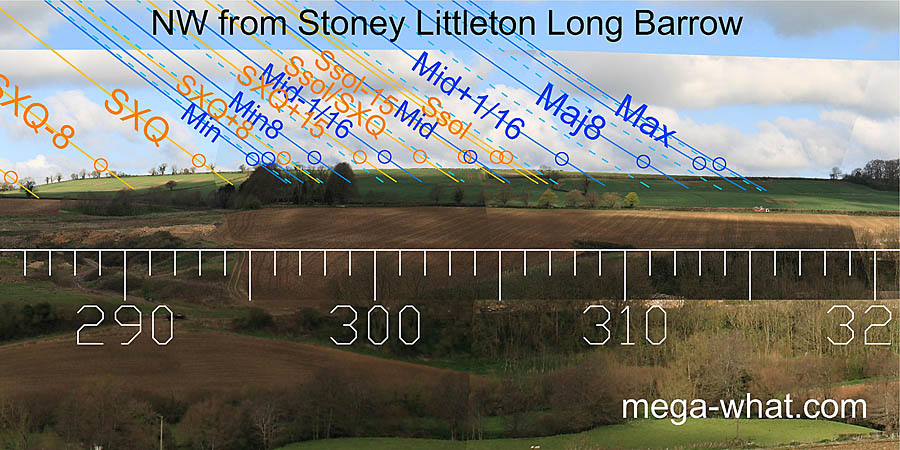 Stoney Littleton Long Barrow
Stoney Littleton Long Barrow:
The passage axis is accurately centred on winter solstice sunrises.
The reverse runs down the hill and dictates the orientation of the mound but is just beyond the north-western major standstill.
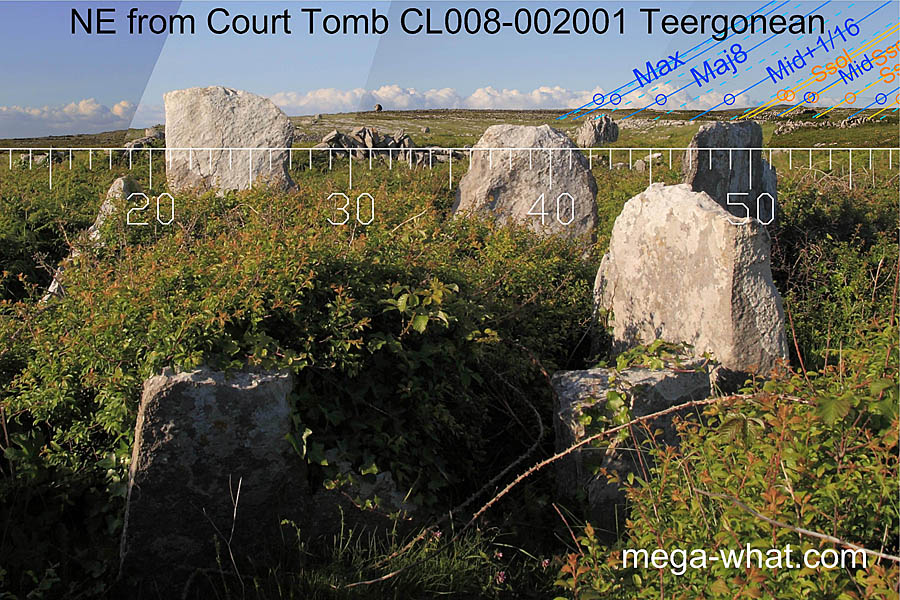
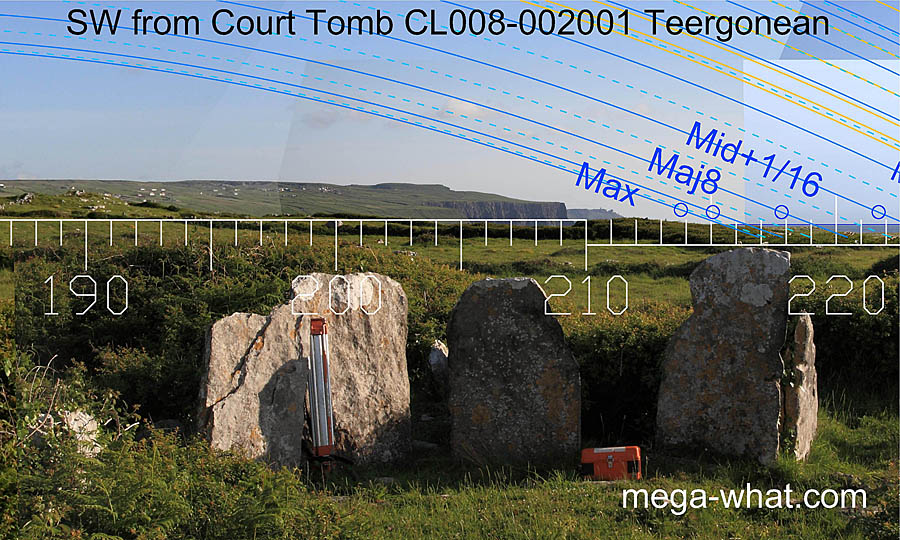 Teergonean Court Tomb
Teergonean Court Tomb:
Given the conditions, precision is not possible but the north-eastern axis is clearly well beyond major standstill.
The south-western reverse axis seems just beyond it but with hazel scrub or similar on that piece of ground would not be.
© Michael Wilson.








































